
Autoped
For sending MFN Newsletter 107 the editor has treated us with a stamp with a very special model of motorcycle.
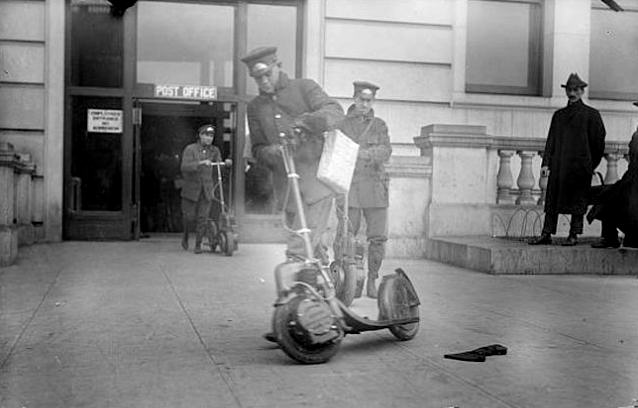
American postmen come out of the post office with their Autopeds......
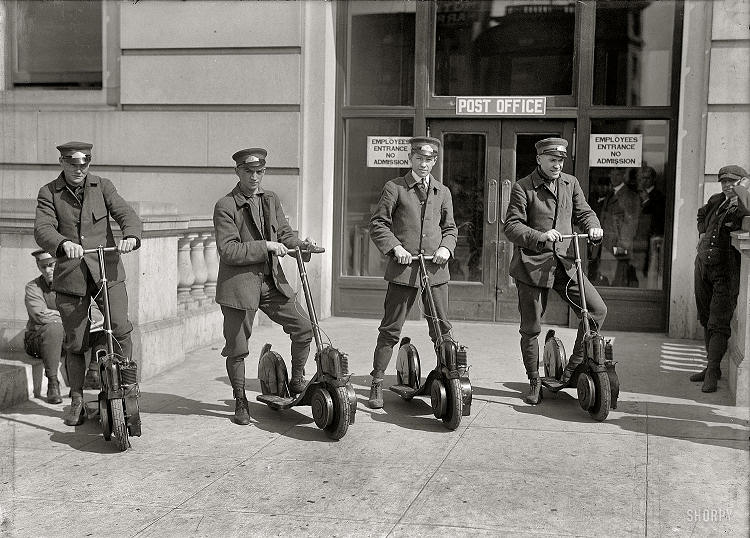
and pose for the picture.....
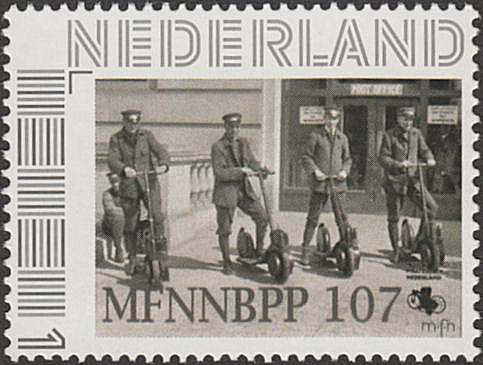
that has been used for MFN Newsletter stamp 107
Recently we already found these vehicles on an issue from the Central African Republic.
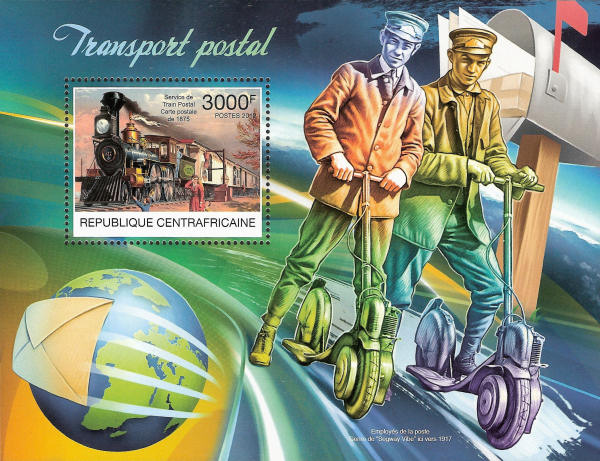
On the website Paul already mentioned the next information about the MFN stamp:
On the stamp 4 American postmen pose on their Autopeds in front of the post office. Autoped was the brand name of a motorized step. It was provided with a 162cc single cilinder 4-stroke engine left from the front wheel. Autopeds have been built from 1915 to 1921.
The name Autoped was used because PEDestrians could move by themselves (AUTO) without walking. A popular name for these vehicles was Step-up, from which the Dutch word "step" has been derived. The Autoped Company of America was based in New York, but was owned by Imperial Motor Industries Ltd. from London, where Autopeds were also built under license by the company Kingsbury. The German Krupp has also built them for a short period.
Not only the post used these steps, as they were also used by civilians in the larger cities. Thanks to their foldable handlebars they could easily be stowed away in the house.
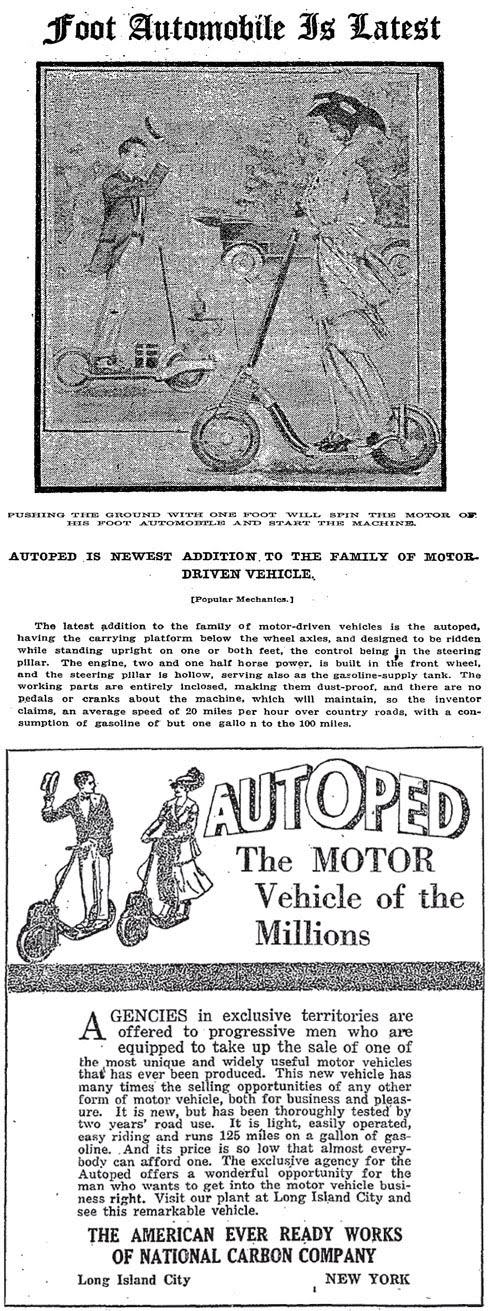
Advertisement with extensive description of the Autoped
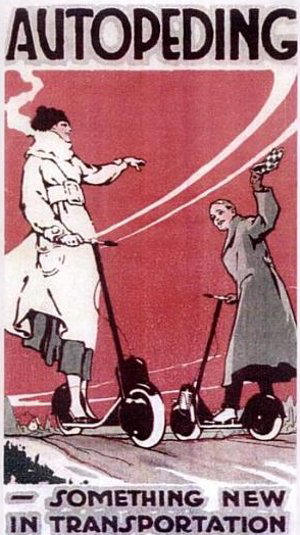

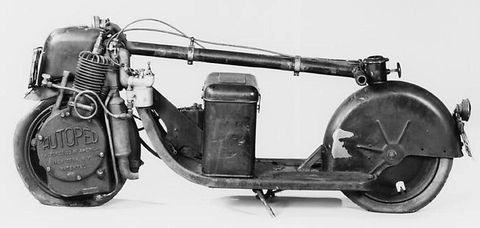
Kroatia 1

There are many stamps that lead to a discussion "is it yes or no a motorcycle". In these cases we try to bring clarity, thus also in case of stamp Kroatia no. 1:
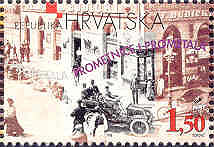
The stamp and the strip where it comes from show the development of transport in Kroatia. For motorized transport an image of a car was chosen. But in the background we believe we see a few motorcycles. Time for research thus.
On the façade we see a name: Budicki. Starting with this name a little bit of Googling immediately delivered the picture that has been used:
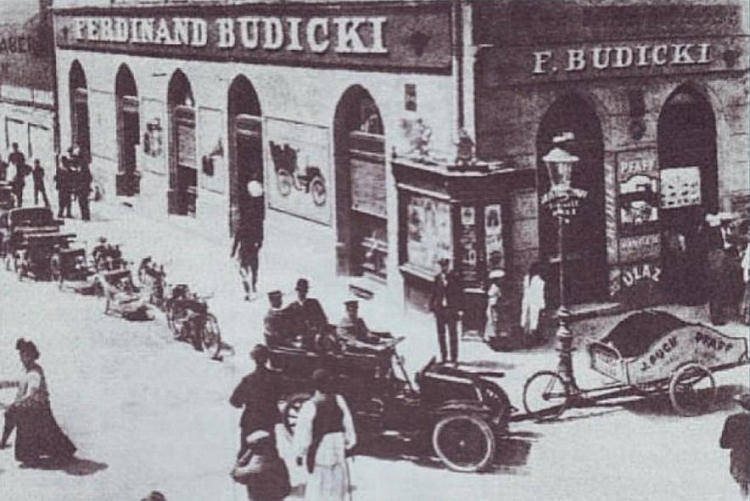
It turned out that Budicki brought the first car to Zagreb in 1901. It concerned a second hand Opel & Beyschlag from 1898 that was used for transport of the sowing machines that were traded by Budicki. By the way, this is not the car on the picture.
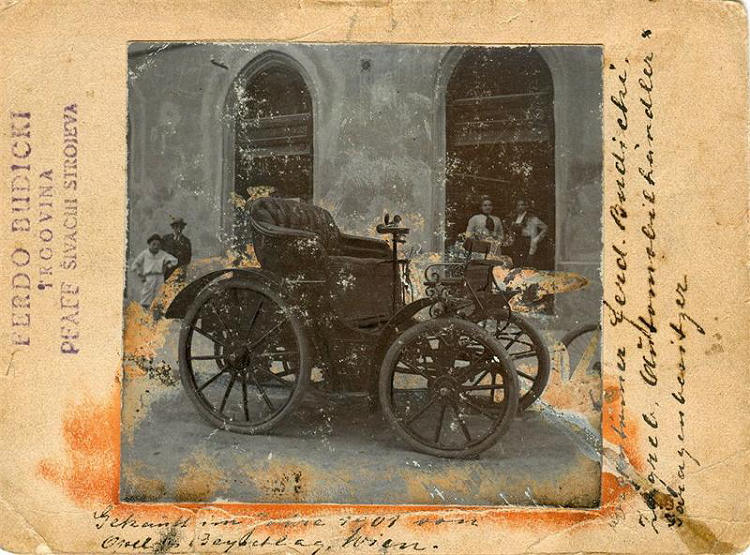
The first Opel imported by Budicki
Already a few years earlier the young Budicki travelled through Europe on a bicycle, and during this trip he met misters Laurin & Klement, in that time manufacturers of the bicycle brand "Slavia". When these gentlemen constructed a bicycle with auxiliary engine in 1899, the Slavia BZ (a 400cc single cilinder) Ferdinand drove with this motorcycle in 14 hours from Vienna to Zagreb. Next to selling sowing machines he started, like many sowing machine traders, a kind of garage for automobiles and motorcycles. He became dealer of the brands Opel (motorcycles and cars), Orion and Laurin & Klement (two-, three- and fourwheelers). Budicki was also founder of the Kroatian Bicyclist and Motorist Association and was, and still is, regarded to be a pioneer in the field of the motorcycle and automobile in Kroatia.
Thus for sure a motorcycle stamp!
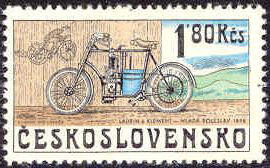
Czech stamp with Laurin & Klement motorcycle
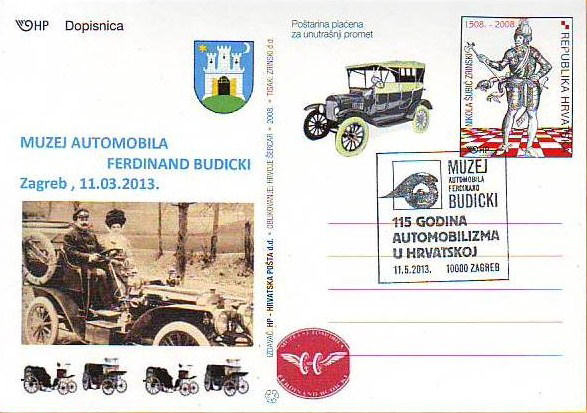
Postcard in honour of the Automobile Museum Ferdinand Budicki
Malaysia uniforms
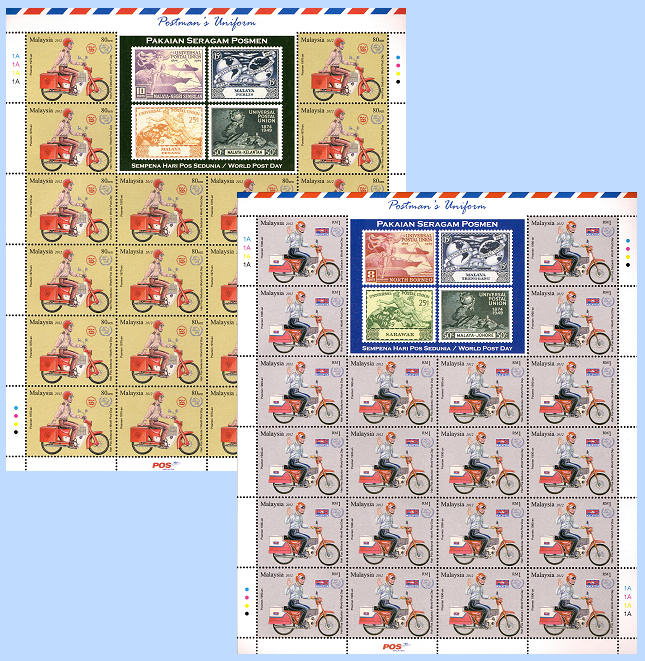
At the announcement of the new issue "Postal Uniforms" of Malaysia in October 2012 we already told about the counter sheets and the decorative images on them. Herewith an image of the 2 sheets that are interesting for us. On each of the 3 sheets (also the sheet with the cyclist) 4 stamps from the colonial era are depicted. On each sheet stamps with the same images, but from different geographic regions from that time, now all part of the present Malaysia.
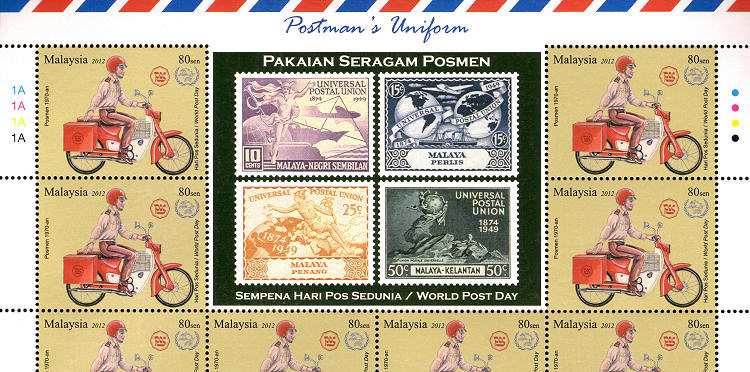
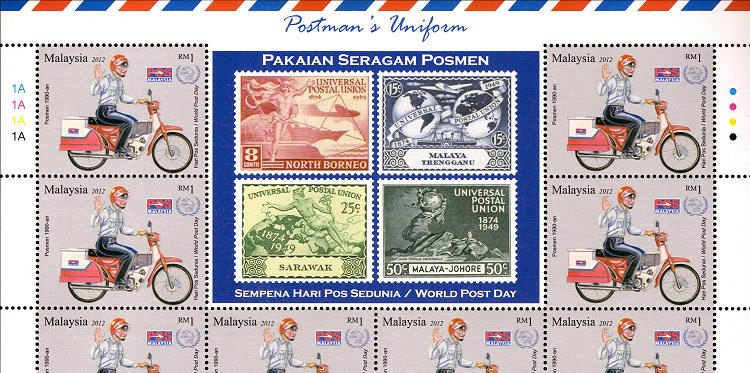
On the presentation pack the block is shown again, and a letter with the first stamp is posted.
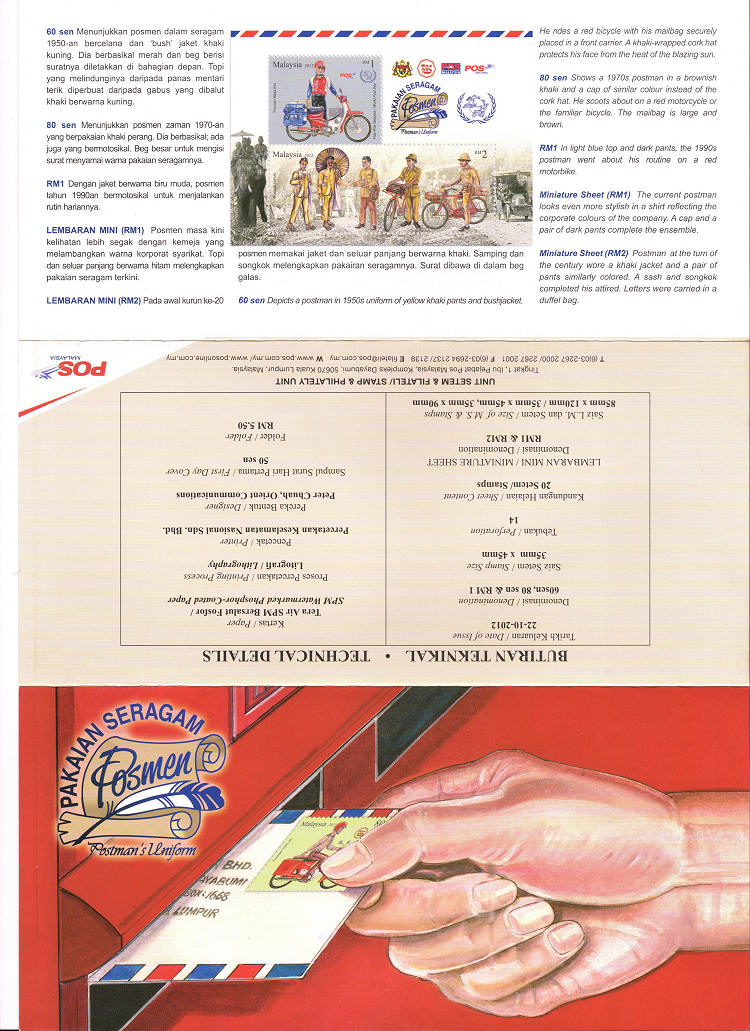
Malaysia "double envelope"
The block from the series "Cartoons" from Malaysia (December 2008) has got another motorcycle on the FDC. The series is about a boy called Mat, based on the Simpsons by the cartoonist Lat (Mohammad Nor Khalid). He grew up in the countryside of Perak, and was therefore named Kampong Boy. The story is strongly autobiographical.
The cartoonist publishes many stories about the daily life in Malaysia under the title
"Lats of Laughs". In these stories a lot of twowheelers occur, logical as there are many motorcycles and mopeds in Malaysia.
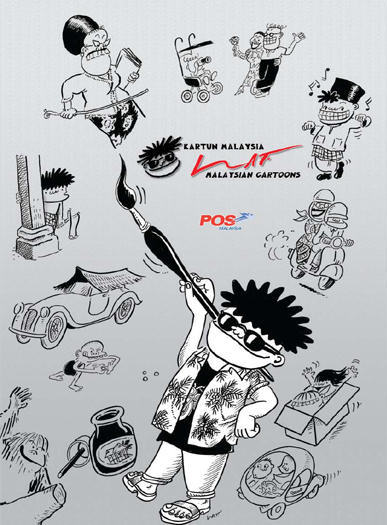
Presentation pack of the Malaysian Cartoons series
On the block we see Mat later in life and already living in town, and therefore carrying the nickname Town boy. He is infesting a pedestrian crossing with a bunch of sting-covered balls (Doerians, because of their penetrating smell also known as "stink fruit").
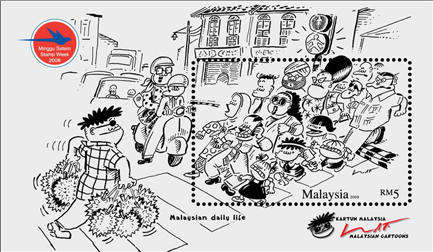
On the FDC of this series Lat drew a young Mat who is carrying a jumbo sized letter which makes the postman, sitting on his moped, already puffing. Lat explained that this image expresses his disappointment from his youth when the postman, instead of bringing the hoped for envelope with money, returned the drawings that he had sent in a big envelope when they were not accepted by the publisher. The detail shown here is from the FDC with the stamps, but is the same as on the block-FDC.
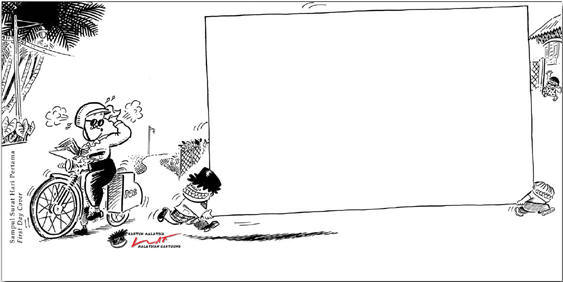
The blank FDC envelope
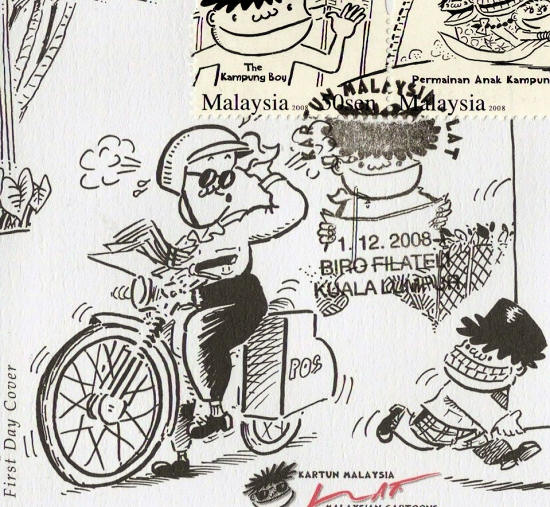
Detail of the FDC envelope with the puffing postman
"By coincidence" the block precisely fits on the drawn envelope! The presentation of the series happened during the Malaysian Stamp Week and during this week an envelope could be acquired daily, with every day another cartoon figure from the Mat series. Only on the last day the envelope with the block could be acquired with a 7th day postmark.

Turkish Post-Ape surprises
The Europe stamps of Turkey from 2013 brought us not 2 new motorcycle stamps, but even 4. On the cheapest of the 2 standard stamps there is a Vespa car, the Ape, depicted. The Ape (to be pronounced as apéé = the Italian word for bee, such a flying honey collector) on the stamp with the electric moped has been provided with a hood. At most of the stamps the hood is blank, but on the stamps in the lowest row of the counter sheets there is a text line on the hood. The text runs from the first corner to shortly before the end of the hood.
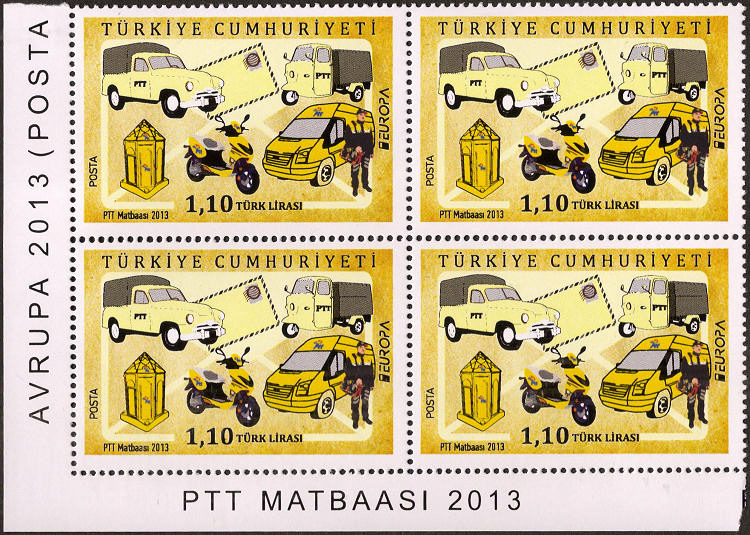
Lower corner of the counter sheet, on the lower 2 stamps there is a text on the hood of the Ape

Detail of the text
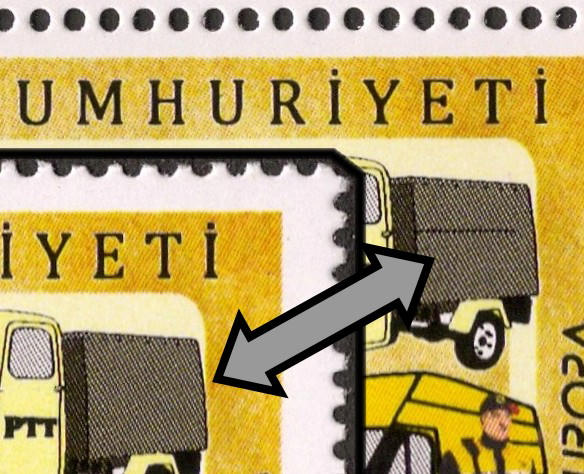
The hood with and without text
When looking for information another variety popped up: now with a text centered on the hood. This stamp has, until now, only been found on the FDC's of this issue.

The short text
Well, let's start searching for it.
Postal Fox trick
In due time we probably all have them in our collection: the stamp and sheet issued on the occasion of 50 years Caravana del Zorro. There's something strange with this issue.
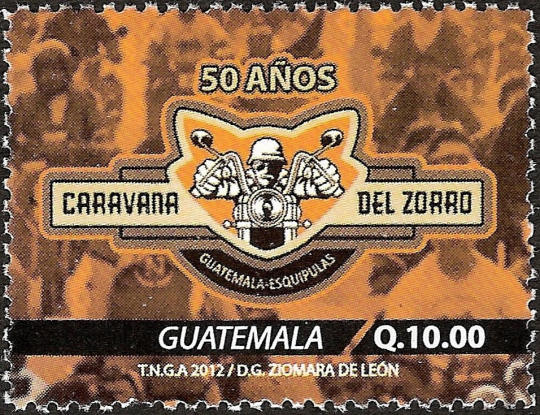
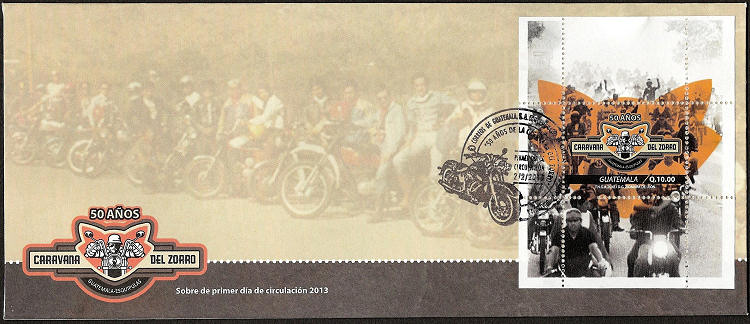
In itself a nice sheetlet with 1 stamp, with on it the logo of the pilgrimage that is ridden by motorcycle every year in Guatemala, and on the sheet an image of the procession.

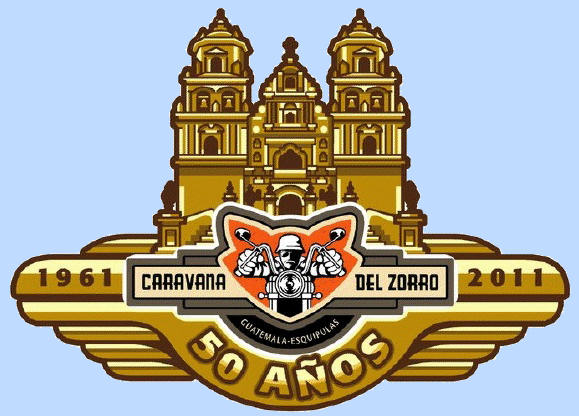
The logo of the Caravana del Zorro
First a bit of history.
In 1961, the era of the dictatorships in his country, Sr. Rubén Villadeleón decided to make on his motorcycle a journey of almost 223 km to the place of pilgrimage Esquipulas, where he prayed in the cathedral to the Black Christ to obtain a better lot for all people. The cathedral with the statue of Cristo Negro is the centre of the Roman church in Central America, and draws half a million pilgrims every year.
In those days a journey like this was certainly not an easy ride, because of the bad roads and the dictatorship. Thus a real pilgrimage.
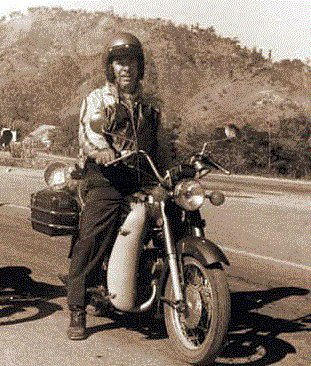
Rubén on his motorcycle
In the years after this first journey Rubén did the ride every year again at the end of January, and more and more friends accompanied him on his motorized pilgrimage. In the mid 80-ies, when democracy was re-established in Guatemala, the number of participants in the ride grew every year till a few hundreds at the end of the last century. Rubéns nickname under his friends was "Zorro", the Spanish word for fox. Therefore people called it popularly "el caravana del zorro", Spanish for "the procession of the fox".
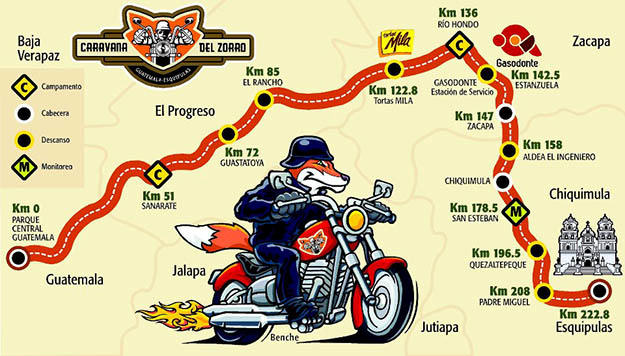
The route of the Caravana del Zorro
In 1995 a few motorcycle shops started sponsoring the ride, and therewith the procession got a more official occurance. From that year on the number of participants started to explode: from 7000 in 2002 till 40.000 motorcyclists in 2010. From 2002 on also a participation fee was asked, which benefits were used for a worthy cause. For instance some schools and medical stations have been built in the Maya regions that were heavily oppressed under the dictatorships.
Now every year around the change-over from January-February the same route is ridden, under the name Caravana del Zorro "Rubén Villadeleón", now with Rubén's son Eddy Villadeleón in front.
In the mean time it has become a tradition for motorcyclists to dress up as striking as possible, and thus many strange birds are joining the ride, which attracks a lot of spectators along the roads.
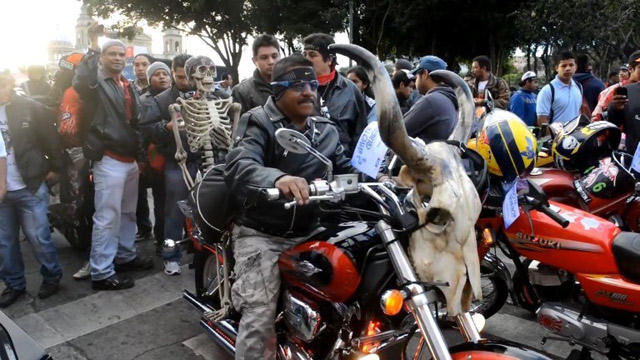
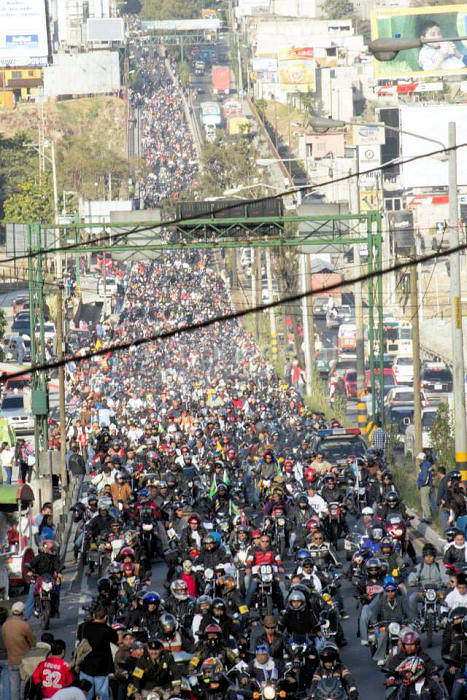
Part of the massive procession of participants
1961-2011: that's 50 years and the 51st ride. Date of issue for the 50st anniversary: February 2nd 2013. I completely lost the logic of it.
Just after the president of Guatemala,
Otto Pérez Molina, in 2012 participated unannounced dressed in a Harley jacket and on a BMW R1200 GS, the ride got worldwide attention. Probably that triggered the Post to issue a stamp with the anniversary logo. Anyhow, for us a nice acquisition in our collection.
Hans de Kloet
Top - Back to former page - Home |